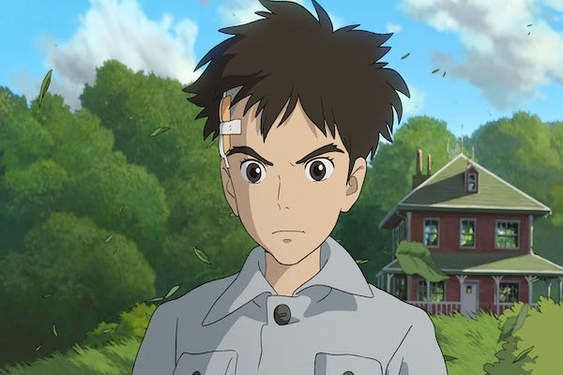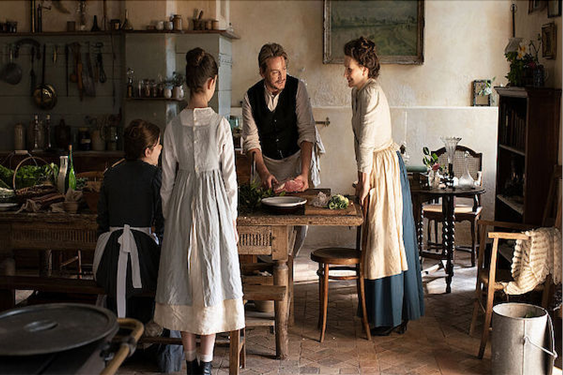In 2013, legendary Japanese animator Hayao Miyazaki claimed he was retiring after the release of his film “The Wind Rises,” which was nominated for an Academy Award for best animated feature. It’s a common refrain for Miyazaki, who said he was retiring after “Princess Mononoke” and the Oscar-winning “Spirited Away.” But he has yet to stick with retirement, as evidenced by the release of his first film in a decade, the enchanting “The Boy and the Heron.”
Based on the 1937 book “How Do You Live?” by Genzaburo Yoshino, which was given to Miyazaki in his youth by his mother, “The Boy and the Heron” is a deeply personal project from the animation auteur. Like his other work, it is a fantastical and wildly imaginative film that straddles the spirit and human worlds, with a story rooted in deeply relatable emotion, threaded with an enduring sense of hope for the future despite the harshness of everyday reality.
Set in the waning days of World War II in a rural village outside Tokyo, “The Boy and the Heron” follows the story of Mahito, a young boy grieving the loss of his mother, who has been killed in a fire. He and his father move away from the city, to a village where his father runs a factory producing military aircraft, and where Mahito meets his new stepmother—his mother’s sister Natsuko. Mahito gets to know his strange new home, where seven grannies cluck and fret over him and the pregnant Natsuko and a pesky grey heron won’t leave him alone.
The magical heron—with terrifyingly huge human teeth and a bulbous nose protruding from its beak—promises to take Mahito to his mother. But it’s not until the ailing Natsuko wanders into the forest that Mahito dares to enter the mysterious, crumbling tower on the property with the heron man as his guide, and one of the grannies in tow. Inside, they encounter a wizened Great-Uncle and sink into a strange underworld, a parallel universe of sorts.
Determined to find and save Natsuko, Mahito encounters all kinds of thrilling characters and creatures in the underworld, including the brave and powerful fisherwoman Kiriko, who hauls up a giant catch to feed the Warawara, bulbous white spirits that eat and float into the sky to be born as people on the other side. He befriends Himi, a fire maiden, and tangles with an army of hungry, human-sized parakeets. As bizarre and wild as it is in this alternate world, everyone he meets seemingly has a tether to people and animals in his own life, and through his adventures, Mahito learns not only about himself, but those around him, and those who he has lost.
There is a timeless quality to the unique beauty and style of “The Boy and the Heron,” rendered with the hand-drawn animation of Miyazaki and the artists at his Studio Ghibli. It’s a process that lends itself to the humanity of their work, which is derived from careful observation. The attention to detail in the backgrounds and to small gestures all adds up to the sense of connection we feel with the characters and their journeys. Despite the jaw-droppingly beautiful and astonishingly surreal worlds and characters conjured up by Miyazaki, we are never not invested in Mahito’s motivation to save both of his mothers, and along the way we are able to watch him grow and change as well.
But at the core of this hero’s journey there is also a profound existential question posed by the Great-Uncle, the keeper of the magical tower, where he keeps the universe in balance. He’s seeking a successor, and he poses a question to Mahito that resonates within its historical setting and in our own present existence: Who will be a steward for our world? Who can make sure the world remains beautiful and not an abomination?
In post-war Japan, during Miyazaki’s childhood, the world felt precarious, and it still feels precarious today. What can we impart to future generations? Can we trust them to keep the balance of the universe? These big questions drive the meaning and the purpose of “The Boy and the Heron,” yet another masterpiece from Miyazaki that helps us to see the beauty of life around us and contemplate the future of the universe more profoundly. Thank goodness retirement doesn’t agree with him.
____
'THE BOY AND THE HERON'
4 stars out of 4
Running time: 2 hours and 4 minutes
Rated PG-13 for some violent content/bloody images and smoking. Where to watch: in theaters Friday, Dec. 8
©2023 Tribune Content Agency, LLC





